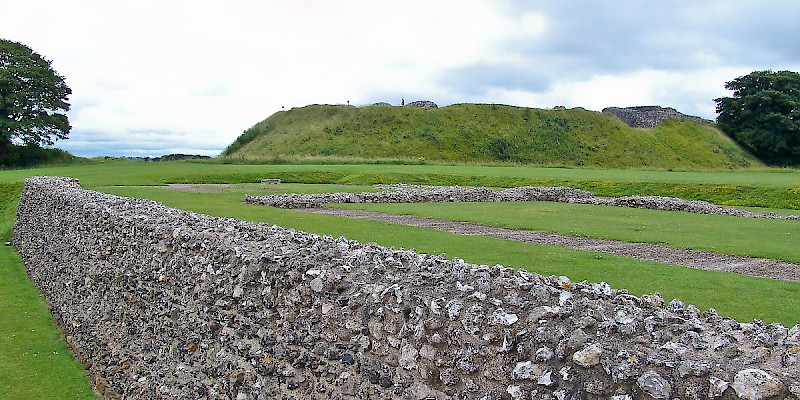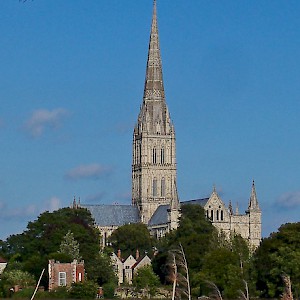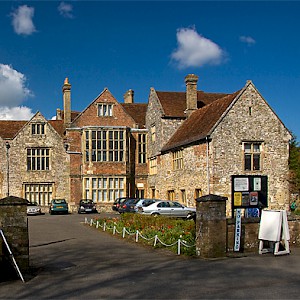Old Sarum ★☆☆

Before Salisbury there was Sarum: Iron Age fort, Roman settlement, and mighty medieval city—all abandoned in the 13C
Today Old Sarum is a wide grassy mound laced with crumbling bits of low stone walls surrounded by another grassy mound—but in the early Middle Ages it was one of the most important cities in England.
Sarum's history stretches back 5,000 years, with a prehistoric settlement growing into an Iron Age fort at the intersection of three ancient trading routes around 400 BC.
In AD 47, the Romans transformed "Sorviodunum" to their own ends, elaborating those trading paths into proper Roman roads, and in turn the Saxons conquered Sarum in the 6C, holding it against Viking invaders until the Norman invasion of 1066 by William the Conquerer.
After the Battle of Hastings, William made Sarum (called "Saresbury" or "Salisbury" by then) his base of operations in England.
The Normans built a motte and bailey castle atop its highest hill, and a stone curtain wall along the outer ditch, inside building a great cathedral and town.
In 1086, William had all the most powerful English lords come here to submit to his authority and swear an oath of loyalty, as recounted by his chronicler:
[H]is council came to him there, and all the landholding men of any account throughout England, whosesoever men they were. And they all bowed to him and became his men, and swore oaths of fealty to him, that they would remain faithful to him against all other men.
Later, King Henry I built a royal palace within the castle, which later served as a region base for the Angevin Plantagenet kings (Henry II, Richard the Lionhearted, and John I).
So, why is Sarum today just a series of grassy mounds with a few foundations sketched out in stone?
Politics.
It was the midst of the great British power struggle between the church, the king, and the barons. King John I had been forced to sign the Magna Carta in 1215.
Two years later, while the kingdom being run by advisors to the adolescent Henry II, a man named Richard Poore inherited the bishopric of Salisbury from his brother, Herbert. Like his brother, Richard at his cathedral quarreled with the local lord in the nearby castle, William Longespée, 3rd Earl of Salisbury, the High Sheriff of Wiltshire.
Richard quickly set into motion Herbert's earlier plans to move the seat of the bishopric from its historic hillside stronghold to his own country estates in the plains just south of the fortified city.
Bishop Poore began building a new cathedral there in 1219, and laid out a town around it for the workers. By 1226, this new Salisbury had become the defacto Salisbury, leaving Old Sarum to slowly depopulate and decay, its cathedral's treaures carted down to fill the new one, its buildings mined for the stones to build the city we now know as Salisbury.
Old Sarum's castle did technically remain the region's administrative center for another century, only to be abandoned finally in 1322.
In 1514, Henry VIII signed over the "stones called the castle or tower of Old Sarum" to courtier Thomas Compton, basically to use as a quarry.
Sarum became just another rubbly hillside on the northern ourskirts of the bustling upstart city of Salisbury.
Tips
If you don't have a car, you can catch the No. 11 bus (www.salisburyreds.co.uk), which runs every 15 minutes or so (you can buy tickets from the driver).
There are two stops in the city center:
- Stop K: Near the Tesco at the south end of Castle Street, just up from the curving intersection with Blue Boar Row.
- Stop H: On Castle Street at Scots Lane.














